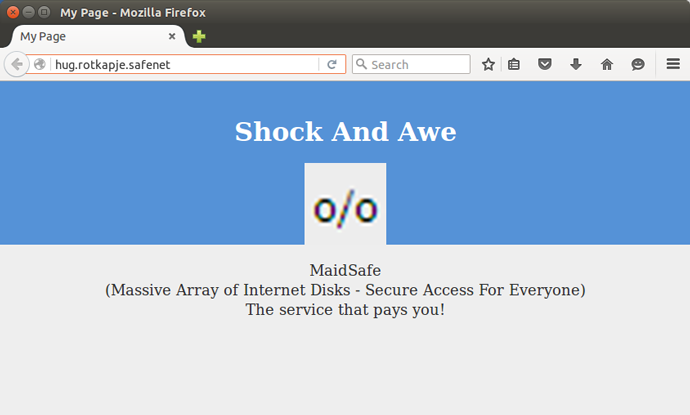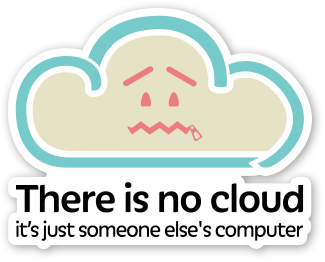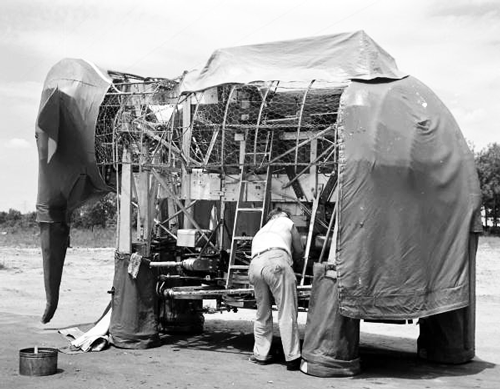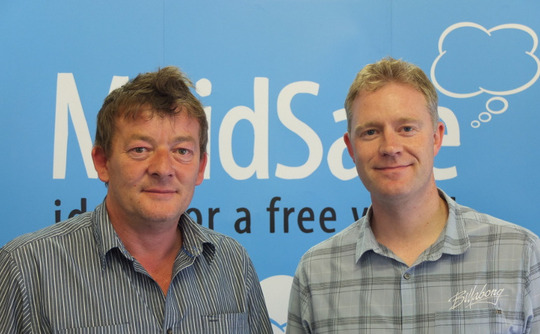Dat van Vodafone? M-PESA:
Why does Kenya lead the world in mobile money?
PAYING for a taxi ride using your mobile phone is easier in Nairobi than it is in New York, thanks to Kenya’s world-leading mobile-money system, M-PESA. Launched in 2007 by Safaricom, the country’s largest mobile-network operator, it is now used by over 17m Kenyans, equivalent to more than two-thirds of the adult population; around 25% of the country’s gross national product flows through it. M-PESA lets people transfer cash using their phones, and is by far the most successful scheme of its type on earth. Why does Kenya lead the world in mobile money?
The Economist - May 27th 2013
Dochter Safaricom heeft vorig jaar een API gekoppeld aan M-PESA, op basis van webservices.
Eergisteren werd bekend gemaakt dat het moederbedrijf Vodafone (net als PayPal) aansluiting gezocht heeft bij het mobiele betaalnetwerk van TransferTo.
Vodafone. Voortgekomen uit Racal - destijds een Britse hofleverancier van “draagbare” en beveiligde ‘battlefield radio’:

Waarbij “Vodafone” ook gewoon een samentrekking van voice-data-fone zou kunnen zijn, maar volgens Wikipedia zat het zo:
Vodafone
The name Vodafone comes from voice data fax over network, chosen by the company to “reflect the provision of voice and data services over mobile phones”.
Vodafone Nederland en Ziggo willen vuzeren - beweert NU.nl:
Ziggo blijft klanten verliezen voor fusie met Vodafone Nederland
Ziggo heeft in het vierde kwartaal van 2015 opnieuw veel klanten zien vertrekken. Het bedrijf verloor ruim 50.000 afnemers van televisie.
Dat heeft moederbedrijf Liberty Global van Ziggo dinsdag bekendgemaakt bij de presentatie van zijn kwartaalcijfers. Daarbij werd ook duidelijk dat Ziggo en Vodafone Nederland gaan fuseren, om via een nieuwe provider zowel vast als mobiel internet aan te kunnen bieden.
Door de afname van het aantal tv-klanten komt het totale aantal Ziggo-klanten met een televisiesignaal op 4,09 miljoen. Het aantal internetklanten bleeft nagenoeg gelijk en staat op 3,1 miljoen. Het aantal mobiele klanten steeg met 5.900 naar bijna 187.000.
Sinds de fusie tussen UPC en Ziggo verliest het bedrijf veel klanten op de vaste markt. Liberty Global zegt dat dit onder meer komt door “agressieve concurrentie, operationele uitdagingen door de samenvoeging van onze netwerken en producten, en prijsverhogingen die we dit jaar hebben doorgevoerd bij alle klanten.”
De gemiddelde Ziggo-klant betaalt maandelijks 44,97 euro. Dat is 1,4 procent meer dan een jaar eerder.
Omzet
Over heel 2015 draaide Ziggo een omzet van 2,75 miljard dollar (bijna 2,5 miljard euro). Een jaar eerder was dat nog 1,5 miljard dollar (1,34 miljard euro), maar toen was UPC nog niet overgenomen. Als daarvoor wordt gecorrigeerd was er juist sprake van een omzetdaling van 2 procent, stelt Liberty Global.
Om in 2016 weer te groeien zegt het bedrijf vooral te willen inzetten op zakelijke klanten en de mobiele markt. Ook moet de klantenservice worden verbeterd om klanten te behouden.
NU.nl - Donderdag 18 februari 2016
Maar het idee was toch dat het hierbij om een joint venture ging?
- 50-50 joint venture: Liberty Global and Vodafone to merge their Dutch operations
Goeievraag.nl:
Bij fusie smelten twee of meer of meer bedrijven in elkaar. Van de oorspronkelijke
bedrijven blijft niets herkenbaars over.
En:
Een joint venture is een samenwerkingsverband tussen twee of meer bedrijven voor
een bepaald project. De bedrijven zijn en blijven zelfstandig.
Van nu.nl kreeg je wel omzetcijfers maar geen resultaat. Naar Telecompaper voor het 4e kwartaal van 2015:
De omzet kwam uit op 614 miljoen euro (-3,8%) en het bedrijfsresultaat (EBITDA of OCF) op 358 miljoen (+4,6%). Het operationeel resultaat was 27 miljoen euro, tegenover een verlies van 37 miljoen vorig jaar.
Ziggo wijt het verlies van diensten en klanten aan concurrentie, netwerkproblemen, produktharmonisering, de integratie van Ziggo en UPC en prijsverhogingen. De stijging van het bedrijfsresultaat was het gevolg van kostenbesparingen en synergievoordelen.
Ruim de helft overhouden? Afkorting:
EBITDA
Ebitda staat voor Earnings Before Interest, Taxes, Depreciation (afschrijving op materiële vaste activa) and Amortisation (o.a. afschrijving of afboeking op immateriële vaste activa zoals goodwill).
Misconceptie: brutowinst, want een deel van de bedrijfskosten is al in mindering gebracht op de omzet.
Winst vóór belastingen. Welke belasting:
Liberty Global, Becoming a Big Fish, Risks Attracting the Eye of a Shark
Liberty Global is still finding ways to deliver for shareholders. As part of its deal to acquire Virgin Media, it struck an inversion — reincorporating the company in London instead of the United States, and reducing its tax bill.
Because the company operates almost entirely in Europe, executives say the move made sense. But Mr. Fries and several other executives remain based in Denver, where Mr. Malone also is based. “Denver is where it all began for the cable industry,” Mr. Fries said. “It’s the birthplace of cable and broadband. Denver is still the cultural heartbeat of the company.”
Mr. Malone and Mr. Fries exhibit similar financial skill. In the days before Liberty Global reincorporated in Britain, Mr. Malone transferred $600 million of his shares in the company to a personal trust and tapped another loophole, avoiding paying $200 million in taxes, according to Bloomberg.
The New York Times - February 16, 2015
Dit niet afgedragen bedrag van 200 miljoen dollar ligt nog altijd te wachten op een bestemming, misschien toch alvast maar even de koppen tellen:
aantal klanten Ziggo 4,09 miljoen
gemiddelde aantal diensten per klant 2,38
aantal 'revenu generating units' 9,73 miljoen
Alleen hebben de bedrijven van genoemde Malone niet 4 miljoen maar 27 miljoen klanten?
Staat tegenover dat er ook voor een veel groter bedrag aan voordeel is genoten:
All told, Mr Malone escaped about $200 million in personal taxes, and Liberty Global’s US shareholders together likely saved more than a billion dollars, according to data compiled by Bloomberg.
Andere aandeelhouders kunnen hier dus nog wat betekenen.
Als in dit geval zaken doen met alleen John Malone zelf volstaat dan kunnen Nederlandse klanten van Ziggo overgaan tot een eenmalige herverdeling van uitgespaarde kosten als volgt:
niet doorgegeven korting eigenaar Ziggo 200 miljoen USD
idem omgewisseld 180 miljoen EURO
aantal 'revenu generating units' 9,73 miljoen
verdeeld over klanten Ziggo € 18,49 per afgenomen dienst
Zij met alleen een tv-abonnement hebben dan recht op € 18,50. Triple-play-klanten van Ziggo met tv, internet en bellen houden 55 euro in?
Dit is dus waar jouw nieuwe platform van pas zou kunnen komen. Wat als Ziggo-klanten zich als één man opstellen en die ene maand abonnementskosten collectief niet afdraagt maar herinvesteert?
Jan Marco, jij noemde al crowdfunding en een inkoopcombinatie als mogelijkheden. Maar als men heeft zitten opletten heeft iedereen ook vast wel in de gaten gekregen hoe je langs andere wegen met veel geld aan nog meer geld kan komen.
Keus genoeg. Het voorbeeld van Google is al eerder genoemd:
Brievenbus A’dam stuwt winst Google
De Nederlandse belastingroute heeft Google 2,6 miljard euro opgeleverd.Het bedrijf betaalde in 2014 over een omzet van 10,7 miljard euro 2,7 miljoen euro belasting,blijkt uit het jaarverslag.
Zonder de fiscale omweg had Google 2,67 miljard euro moeten afdragen,duizend keer zo veel dus.Brievenbusfirma Google Netherlands Holding is gevestigd op de vijftiende etage van een kantoorpand aan de Zuidas in Amsterdam.
De 10,7 miljard euro zijn inkomsten uit royalties van Google wereldwijd.Na de belastingafdracht in Nederland werd het geld overgemaakt naar Google Ierland, dat formeel op Bermuda is gevestigd.
NOS Teletekst 113 - 18-2-2016
In Duitsland kunnen mensen die om te beginnen al genoeg kapitaal bezitten om deze truc ook nog eens te proberen al jaren twee keer geld van de belasting terugkrijgen:
Staat schaute bei dreister Milliarden-Trickserei zu
Die Banken entdeckten bereits Ende der 90er-Jahre eine Lücke bei der Besteuerung von Dividenden, die sie für lukrative Geschäfte auf Kosten der Steuerzahler nutzten. So gab es bis 2012 einen toten Winkel im Abwicklungssystem für Wertpapiergeschäfte, der es ermöglichte, durch den Verkauf einer Aktie kurz vor dem Dividendenstichtag für nur einmal gezahlte Kapitalertragsteuer mehrere Steuergutschriften zu erhalten.
Der Trick funktionierte so: Ein Händler verkaufte zunächst die Aktie in einem Moment, in dem er sie noch gar nicht besaß – ein sogenannter Leerverkauf. Aufgrund der Trägheit der Abwicklungssysteme ist dann rund 48 Stunden lang nicht klar, wer der Eigentümer des Wertpapiers ist, und es werden zwei Steuergutschriften ausgestellt.
Die Welt - Wirtschaft - “Cum-Ex”-Affäre - 14.06.13
Weer dichter bij huis:
Offshore vermogens kosten Nederland €10 mrd per jaar
Uit het onderzoek van Van Koningsveld blijkt dat de offshore dienstverlening er wereldwijd in slaagt om vermogen, identiteiten en geldstromen aan het oog van belasting- en opsporingsdiensten en toezichthouders te onttrekken.
Dit gebeurt op een ongekende schaal. In totaal stond eind 2013 ongeveer € 5.565 mrd offshore bij bankinstellingen. Dat is ongeveer een kwart van de totale wereldwijde banktegoeden.
Het is aannemelijk dat dit offshore vermogen geheel of gedeeltelijk niet is aangegeven bij de belastingdienst in het woonland van de bezitter. De promovendus schat dat Nederland jaarlijks € 10 mrd op deze wijze aan belastinggeld misloopt.
fd.nl - Economie & Politiek - 5 oktober 2015
Als kennismakingsgeschenk kan je de mensen die zich voor jouw platform aanmelden een leuke attentie sturen:
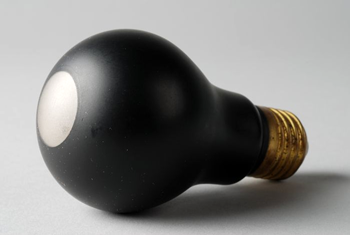
Of dat zwarte peertje helpt, heeft het beoogde geïntensiveerde boekenonderzoek op dat moment inderdaad minder kans van slagen:
‘Fiscus mist 300 mld euro aan vermogens’
Sinds het boek van de Franse econoom Thomas Piketty over de verschillen tussen arm en rijk – én diens komst naar de Tweede Kamer een jaar geleden – is vermogensbelasting een heikel thema in Den Haag. Het kabinet wil het belastingsysteem op spaargeld en vermogens vanaf 2017 veranderen. Er komen verschillende heffingen voor ‘kleinere’ spaarders (tot 100.000 euro), hogere vermogens (boven 100.000 euro) en nóg hogere vermogens (boven 1 miljoen).
De aanleiding
Kamerlid Pieter Omtzigt (CDA), een man die van procedures houdt, vindt dat het kabinet eerst een grondige analyse moet maken van de huidige box 3: de fiscale box waarin spaargeld en vermogen worden belast. Hij stelde dinsdag in het vragenuurtje dat het totale vermogen van alle Nederlandse huishoudens 700 miljard bedraagt, terwijl er bij de Belastingdienst maar 400 miljard aan vermogen in box 3 wordt aangegeven.
En, klopt het?
Een deel van die 100 miljard is te verklaren door bijzondere vrijstellingen op vermogensbelasting, zoals voor kunstwerken, of lijfrente en groene beleggingen. Dat weet ook Omtzigt. Maar de blinde vlek van de Belastingdienst kan echter ook veel gróter zijn als klopt wat oud-FIOD-rechercheur Jan van Koningsveld deze week in zijn proefschrift beweert: rijke Nederlanders hebben bijna 130 miljard euro weg gesluisd naar belastingparadijzen. Dat ziet ook het CBS zelfs niet. Dit meegewogen zou het totale onzichtbare vermogen zo tussen de 200 en 300 miljard kunnen liggen.
Conclusie
Hoewel op de cijfers valt af te dingen, moet het oordeel luiden dat de stelling van Omtzigt grotendeels waar is.
NRC - Next Checkt - 8 oktober 2015



